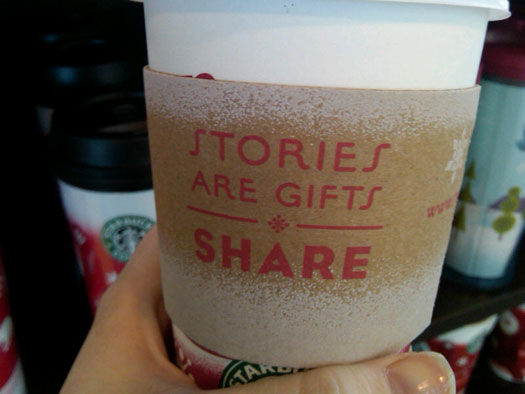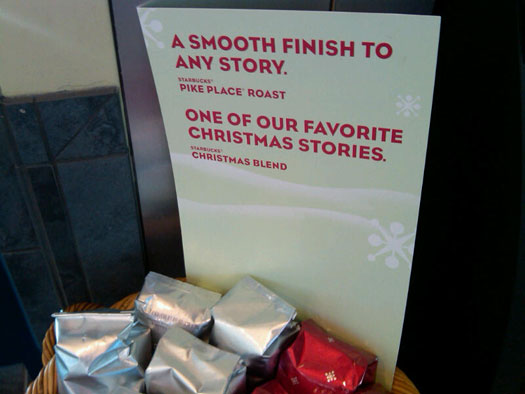 Starbucks holiday coffee cozy. Photos: Chappell Ellison.
Starbucks holiday coffee cozy. Photos: Chappell Ellison.
After sixty years of post-war consumerism, you’d think retailers would run out of ideas for propagating the gift giving frenzy that begins after Thanksgiving. I’m not trying to be a Scrooge — the combination of hot chocolate, twinkle lights and Christmas music is a guilty pleasure. Yet every holiday season, companies attempt to reinvent their image because they know nostalgia is on their side.
Perhaps the greatest source of my bewilderment comes from Starbucks, whose holiday advertising campaign hinges on the return of their holiday cups. Every year, their white cup transforms into a holiday panorama of penguins, polar bears, or whatever wintery icon is popular that season — a phenomenon that excites several of my friends to the point of actually bringing it up in conversation. “I can’t believe holiday cups are back,” one of my friends said to me over the phone recently. It was the first time I had heard someone measure their life by Starbucks cups.

This year’s Starbucks campaign is more suspect than usual. “Stories are gifts — share,” snakes across the cardboard coffee cozies. “Share a cup, share a story,” proclaim the banners hanging in the store windows. While the act of storytelling and coffee is a logical connection, it hardly seems fair for Starbucks to co-opt such an intimate bond.
This offense might have gone unnoticed if several other large corporations weren’t abusing the art of storytelling. I recently spotted a Whole Foods bag, printed with images of snowflakes, red ribbons and the phrase, “Every meal has a story.” And here I was thinking that writers were purveyors of stories, not coffee chains or organic grocery stores. So this holiday season, just take a deep breath and remind yourself that you aren’t buying a white peppermint mocha latte or a $15 box of organic quinoa — you’re purchasing stories to be shared.
